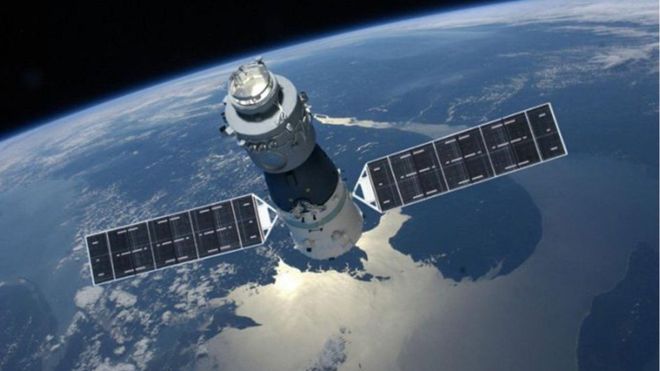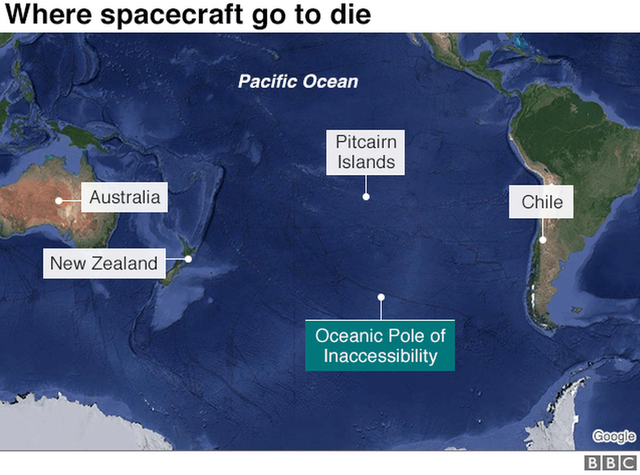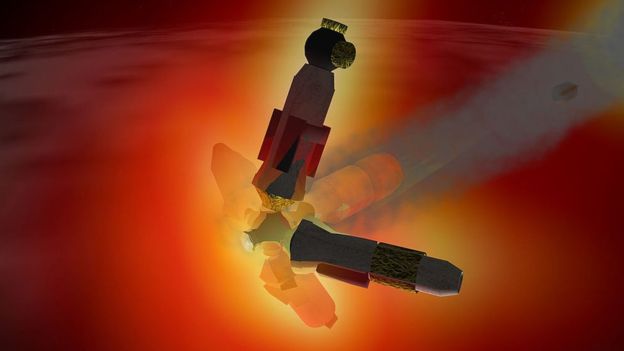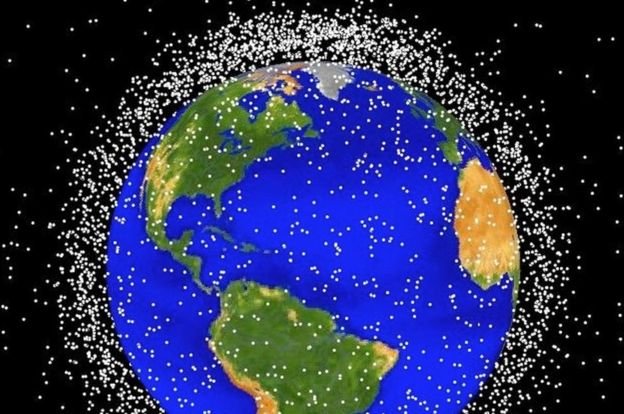 China's Tiangong-1 space station is currently out of control and expected to fall back to Earth next year. But not in the remote place where many other spacecraft end their days.
China's Tiangong-1 space station is currently out of control and expected to fall back to Earth next year. But not in the remote place where many other spacecraft end their days.
Explorers and adventurers often look for new places to conquer now that the highest peaks have been climbed, the poles reached and vast oceans and deserts crossed.
Some of these new places are called the poles of inaccessibility. Two of them are particularly interesting.
One is called the continental pole of inaccessibility - it's the place on Earth furthest from the ocean. There is some debate as to its exact position but it's considered by many to be near the so-called Dzungarian Gate - a mountain pass between China and Central Asia.
The equivalent point in the ocean - the place furthest away from land - lies in the South Pacific some 2,700km (1,680 miles) south of the Pitcairn Islands - somewhere in the no-man's land, or rather no-man's-sea, between Australia, New Zealand and South America.

his oceanic pole of inaccessibility is not only of interest to explorers, satellite operators are interested in it as well. That's because most of the satellites placed in orbit around the Earth will eventually come down, but where?
Smaller satellites will burn up but pieces of the larger ones will survive to reach the Earth's surface. To avoid crashing on a populated area they are brought down near the point of oceanic inaccessibility.
Scattered over an area of approximately 1,500 sq km (580 sq miles) on the ocean floor of this region is a graveyard of satellites. At last count there were more than 260 of them, mostly Russian.
China space station to fall to Earth in 2017
The race to destroy space garbage
Ugandan garden hit by space junk
1979: Skylab tumbles back to Earth
The wreckage of the Mir space station lies there. It was launched in 1986 and was visited by many teams of cosmonauts and international visitors.
With a mass of 120 tonnes it was never going to burn up in the atmosphere, so it was ditched in the region in 2001 and was seen by some fishermen as a fragmenting mass of glowing debris racing across the sky.

Many times a year the supply module that goes to the International Space Station burns up in this region incinerating the station's waste.
No one is in any danger because of this controlled re-entry into our atmosphere. The region is not fished because oceanic currents avoid the area and do not bring nutrients to it, making marine life scarce.
One future visitor to this desolate place will be the International Space Station.
Current plans are for it to be decommissioned in the next decade and it will have to be carefully brought down in the oceanic pole of inaccessibility. With a mass of 450 tonnes - four times that of the Mir space station - it will make a spectacular sight.
Sometimes however, it's not possible to bring a satellite or space station down in the South Pacific if ground controllers have lost contact with it.

Such a thing happened with the 36-tonne Salyut 7 space station in 1991 which came down in South America or the American Skylab that struck Australia in 1979. No one on the ground was injured, or indeed as far as we know, ever has been by a piece of falling spacecraft debris.
We will face that problem again next year.
Between January and April the Chinese Tiangong-1 will come back to Earth. It was launched in 2011 as China's first space station. The following year it was visited by China's first female astronaut, Liu Yang.
Tiangong-1's orbit is decaying as it heads towards re-entry. But Chinese engineers have lost control of it and cannot fire its thrusters to bring it down in the South Pacific.
Instead it will come down somewhere between 42.8 degrees north and south. That's between the latitude of northern Spain and southern Australia, and we won't be able to be more precise than that until just a few hours before it burns up.
Tiangong-1 is one space station that probably won't join its companions in the remote South Pacific.
Authors get paid when people like you upvote their post.
If you enjoyed what you read here, create your account today and start earning FREE STEEM!
If you enjoyed what you read here, create your account today and start earning FREE STEEM!
Hi! I am a robot. I just upvoted you! I found similar content that readers might be interested in:
http://www.bbc.co.uk/news/science-environment-41683839
Downvoting a post can decrease pending rewards and make it less visible. Common reasons:
Submit
yes this content is BBC News site
Downvoting a post can decrease pending rewards and make it less visible. Common reasons:
Submit
!testalpha
Just testing, please ignore.
Downvoting a post can decrease pending rewards and make it less visible. Common reasons:
Submit
The @OriginalWork ALPHA V2 bot has upvoted this post!
Some similarity seems to be present here:
http://www.iran-daily.com/News/202792.html?catid=3&title=The-place-spacecraft-go-to-die
This is an ALPHA version. Reply if you feel this is an error.
Downvoting a post can decrease pending rewards and make it less visible. Common reasons:
Submit